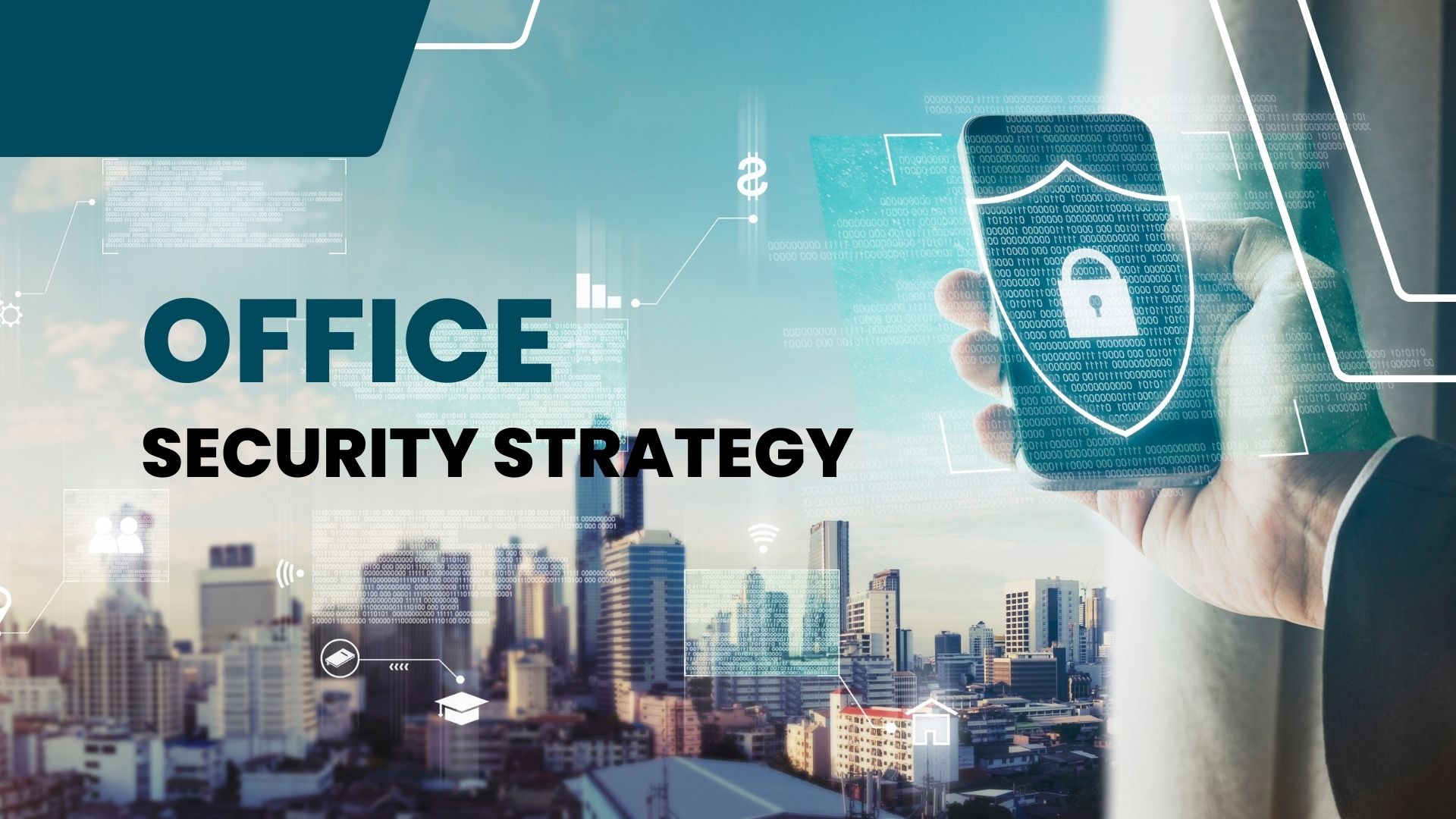Beyond Locks and Keys: Office Security Strategies for 2024

Page Contents
As 2023 draws to a close we can reflect back on one of the most turbulent years for decades. The rise of disruptive technologies like AI, market and geopolitical uncertainties, and the continuing shift in working practices, have all played their part in creating these circumstances.
Against this background, the importance of office security strategies must remain a priority. As the workplace and work practices evolve, so does the range and sophistication of the threats that office security strategies must defend against.
From the integration of digital and physical security systems to the innovative use of AI and automation, we look at how office security in 2024 will go beyond mere locks and keys.
The Convergence of Physical and Cybersecurity
There has always been a convergence between physical and cybersecurity systems. However, as technology, the threat landscape, and work practices continue to evolve the lines between the two “fields” continue to blur.
Among the key factors driving this convergence are:
- Unified security systems: Combining physical security measures like surveillance cameras with cybersecurity protocols to create a cohesive defense strategy.
- Enhanced data protection: Ensuring networked security devices are safeguarded against cyber threats, thereby protecting sensitive data from breaches.
- Collaborative security efforts: Bridging the gap between IT and physical security teams to foster a more comprehensive approach to threat detection and response.
- Employee training and awareness: Educating staff about cybersecurity best practices to prevent human errors that could lead to security breaches.
Physical and cybersecurity systems have traditionally been separate entities but the changing shape of technology and the workplace demands a more integrated approach. The increased adoption of cloud-based security solutions, the growth of AI, and the rise of hybrid/remote models will all drive the acceleration of this convergence into 2024 and beyond.
Advancements in AI and Automation
Over the years, many emerging technologies have been heralded as “disruptive.” The arrival of AI has changed how we define this term. Seemingly in the blink of an eye, the advancements in AI and automation have moved from the realm of fiction to the real world. Physical security systems are taking advantage of this paradigm shift and 2024 will see the utilization of this technology increase exponentially:
Key aspects to look for in 2024 include:
- Predictive threat analysis: Utilizing AI algorithms to analyze data from various sources, enabling proactive identification and mitigation of potential security threats.
- Automated access control: Implementing systems like keyless entry to streamline entry processes while enhancing security measures.
- Intelligent surveillance: Leveraging AI to enhance video surveillance systems, allowing for real-time threat detection and incident analysis.
- Efficiency in security operations: Automation in security protocols ensures swift responses to threats and reduces the reliance on manual monitoring.
While the human factor will remain relevant in security strategies in 2024, the increasing integration of AI and automation will result in increased efficiencies, faster response times, and advanced threat management capabilities.
Biometric and Access Control Innovations
They say that every technology has its day, with some lasting longer than others. The humble lock and key has had a longer “day” than most but with the advent of advanced access control systems, its time could finally be drawing to a close.
Biometric and access control innovations are redefining office security and this trend is set to continue into 2024 with developments that include:
- Advanced biometric authentication: Incorporating technologies like facial recognition and fingerprint scanning for more secure and personalized access control.
- Keyless entry systems: Emphasizing convenience and security, door entry systems for businesses use smart technology to allow access without traditional keys or codes.
- Integration with other security systems: Biometric systems are increasingly being integrated with other security measures for a more comprehensive security solution.
Advanced access control systems are truly taking office security “beyond the lock and key”.
Privacy, Compliance, and Future-Proofing
One of the consequences of a reliance on technology like AI and data-driven decision-making is the privacy and compliance issues that follow it. This has added relevance when factors like cloud-based systems are thrown into the mix.
The result is that privacy and compliance are becoming as important as the security measures themselves.
Key considerations include:
- Adherence to data protection regulations: Ensuring that security technologies comply with privacy laws like the ever-changing GDPR, especially in handling biometric data and surveillance footage.
- Robust cybersecurity measures: Implementing strong cybersecurity protocols to protect sensitive data from breaches. The importance of this is underlined by the results of a survey by Duke University, which found that 80% of US businesses had been successfully hacked.
- Regular system updates and audits: Keeping security systems up-to-date and conducting regular audits to ensure compliance and address any vulnerabilities.
Security is about protecting personnel and physical & digital assets, but just as importantly it is about protecting the trust that customers have in a business. Acquiring adequate cybersecurity coverage and ensuring privacy regulations are complied with plays a large role in protecting this trust.
Office Security In 2024: Technology Is the Key
The rapid pace of technological innovation and the ever-changing face of how we work has driven a rapid evolution in how we secure our workplaces. Technology is leading the charge with the advent of AI and the increasing use of cloud-based systems at the forefront of the change.
However, while these are undoubtedly improving office security, vigilance is still required if such systems are to work for us and not against us. The inevitable convergence of digital and physical security opens up new vulnerabilities, including the privacy and compliance concerns that are an essential part of any office security strategy.
In short, 2024 is going to change the face of office security for the better, but we need to remember that someone has to “police the police.”




